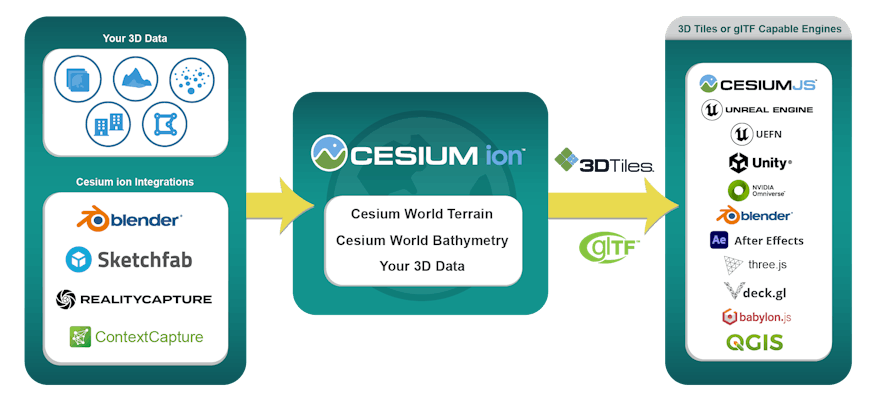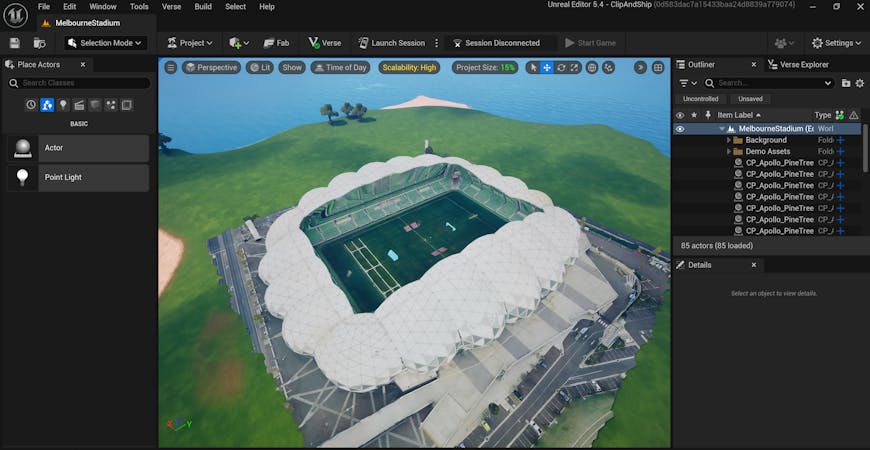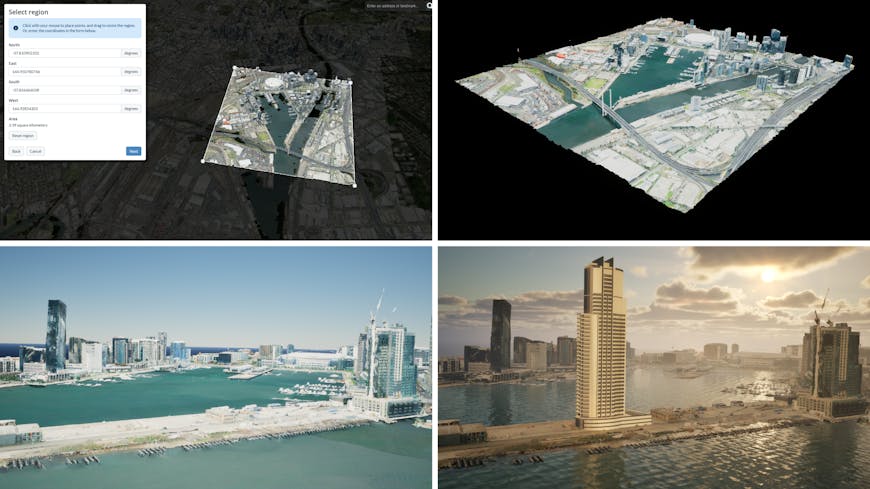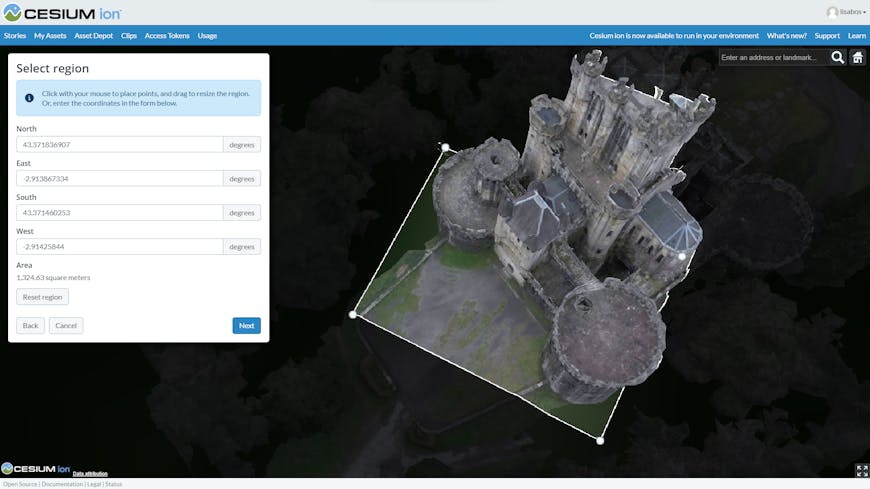Unlock New 3D Geospatial Workflows with Offline Clips of 3D Tiles and glTF from Cesium ion
You can now download 3D geospatial data as 3D Tiles or glTF to add real-world context to streaming or disconnected applications with Cesium ion’s clipping feature, also known as “clip and ship.”
Clip with Cesium ion to easily add geospatial context for applications with 3D Tiles and glTF.
Streaming 3D Tiles from Cesium empowers developers to build precise and impactful geospatial experiences, and clipping makes it possible to take 3D Tiles to even more environments. Clipping in Cesium ion extends 3D geospatial data to additional 3D DCC (digital content creation) tools that can be offline or online. Clips from Cesium ion can be used in any disconnected application or web library with 3D Tiles support, and because you can also export real-world content as glTF from Cesium ion, the reach of geospatial data is almost unlimited.

Use clips from Cesium ion in your favorite 3D DCC tools and 3D libraries for the web.
For example, a clipped 3D tileset imported to Fortnite brings online players to a real stadium. Read more about the Cesium to UEFN workflow and stay tuned for Blender and more in the coming days.

A Cesium ion glTF clip in UEFN. Photogrammetry model source is City of Melbourne 3D Textured Mesh, CC BY 4.0.
Users can bring their architectural visions to life in offline presentations or keep security personnel safe with disconnected geospatial intelligence while they navigate dangerous situations. We’re eager to see how the community uses this capability for their unique needs.

Use a 3D Tiles clip from Cesium ion to create geospatial context in an Unreal Editor project. Sketchfab model of Pivotal Point by hamma085, CC BY 4.0.
Creating a clip is easy. Go to the Cesium ion Clips tab, choose “Create clip,” and follow the menus. Users may clip Cesium ion assets they added to Cesium ion as well as Cesium global 3D content, including Cesium World Terrain, Cesium World Bathymetry, Cesium OSM Buildings, and Sentinel-2 imagery. Some third-party data, such as Google Photorealistic 3D Tiles, is not available for clipping. Clipping can be used on SaaS and in Cesium ion Self-Hosted to create portable, disconnected solutions.
With SaaS, Cesium ion users have a monthly quota of clips, the size of which depends on account type. Clipping is unlimited for users of Cesium ion Self-Hosted.

Clipping in Cesium ion. Sketchfab model of Butron Castle by user 333DDD, CC BY 4.0.
Cesium’s clipping feature is another example of how standards drive the 3D geospatial ecosystem with openness and interoperability. Cesium was active in the creation of glTF by the Khronos Group in 2015. In 2015 we introduced 3D Tiles, the open standard for massive, heterogeneous 3D geospatial datasets that builds on glTF, now a widely adopted OGC Community Standard.
Try the clipping feature today by signing up for Cesium ion.